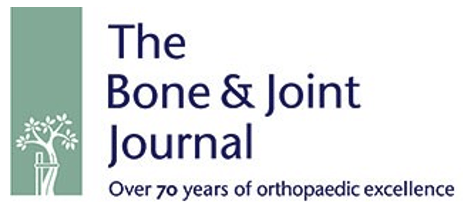NSpine 6th Main Conference at Sheraton Porto Hotel May 31st-June 3rd 2022 in Porto / Portugal.
All accepted abstracts are eligible for podium presentation at NSpine Main Conference.
Presenters will receive a discounted registration rate (or partial refund if already registered).
Best 3 presentations will receive an educational grant from NSpine.
Best ranking accepted abstracts will be published in the proceedings of The Bone & Joint Journal with an impact factor of 5.082.
The NSpine platform is designed by surgeons for surgeons.
NSpine supports the entrepreneurial and creative nature of surgeons, researchers and developers in finding solutions to clinical problems.
In addition to academic contributions, NSpine also welcomes presentations on surgical technique and novel construct solutions that advance surgical know-how, educational rare cases, emerging technology, complications and failures.
Abstracts in the following fields will be considered.
- Paediatric Spinal Deformity
- Adult Spinal Deformity
- Metastatic and Primary Spinal Tumours
- Minimally Invasive Spine Surgery
- Spinal Arthroplasty and motion preservation
- Robotic Technology in Spine Surgery
- Smart Operating Room Technology
- Emerging implant technology
- Spine surgery in developing countries
- Spinal trauma and spinal cord injury
- Neuromonitoring
- Complex cervical surgery
- Technical surgical innovation
- Free papers
Abstracts are scored independently by a panel of established international surgeons.
Timelines:
- Submission opens 1st of December 2021.
- Submission closes 8th January 2022 midnight (CET).
- Confirmation of abstract acceptance by 1st February 2022.
Instructions for submission:
Please note that the deadline has passed and we are not accepting any further applications.
The file should be Word (.doc). Use single line spacing. Set the tab to a five-character indent.
TEXT FORMAT
Starting Text (without bullet points)
- Title (CAP letters)
- Subtitle (if appropriate)
- Authors (initials and surnames only – no first names)
- Author affiliations to include institution name, town/city and country (please try to limit affiliations to a reasonable number)
- Contact email address for reader inquiries
The title should be in bold capitals (upper case), flush to the left margin. On a new line, after a line space, the authors’ names should start with their initials, each followed by a full stop before the surname (eg. F. Smith, A.C.N. Gray, etc). No medical degrees or appointments should be included.
Leave one line space before beginning abstract.
PLEASE NOTE THE FOLLOWING IMPORTANT POINTS:
- The text of each abstract should be approximately 250 words, and ideally no more than 600
- Each abstract should include one email address for a nominated author, for reader inquiries
- Each abstract must include the source of study (minimum: town/city and country)
- Illustrations, images and tables may be included in the submission but will NOT be published.
- Please do not use bullet points, asterisks, or any non-standard characters.
EXAMPLE ABSTRACT: The following shows an example of a correctly typed abstract. Please take a look:
CHANGE IN TUMOUR VOLUME AS A MEASURE OF CHEMOTHERAPY-INDUCED NECROSIS IN EWING’S SARCOMA OF THE BONE
Abudu, R.J. Grimer, M. Davies, P. Pynsent, D.C. Mangham, R.M. Tillman, S.R. Carter
Royal Orthopaedic Hospital Oncology Service, Birmingham B31 2AP, UK
Email: x@x.com
Reduction in tumour volume following chemotherapy may in part be due to necrosis of neoplastic cells, reduction of the supporting stroma or resolution of tumour-induced inflammation. We analyzed the CT/MRI scans and histology of 50 patients with Ewing’s sarcoma of the bone treated between 1983 and 1993 to determine the correlation between change in tumour volume and tumour necrosis following chemotherapy; and determine the influence of tumour necrosis and change in tumour volume on prognosis. The mean age was 18 years (range 5 to 40 years), and 40 of the tumours were located in the extremities, and ten centrally. The volume at diagnosis varied from 31 ml to 1790 ml.
There was a negative correlation between observed change in volume and necrosis (r = 0.73, p = 0.0001). Tumour progression, despite chemotherapy, was only seen in those with less than 60% necrosis. The relapse-free survival and overall survival were 71% and 78%, respectively, for those with more than 90% necrosis, and 37% and 59%, respectively, for those with less than 90% necrosis (p = < 0.05). Though the outcome in patients with more than 40% tumour volume reduction was better than those with less than 40% reduction, this did not reach statistical significance. We found no relationship between tumour volume and serum lactate dehydrogenase levels at diagnosis. Patient’s weight, sex, body mass index and tumour site did not affect change in tumour volume following chemotherapy or the observed tumour necrosis.
We conclude that change in tumour volume is a good predictor of chemotherapy-induced necrosis and that necrosis is a strong prognostic factor in Ewing’s sarcoma of the bone.

